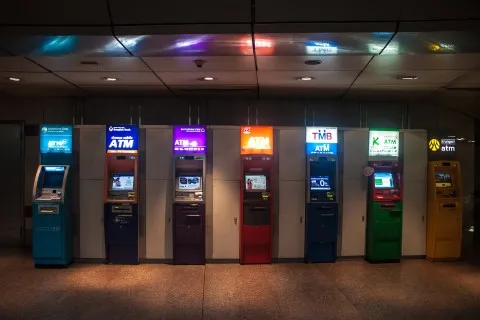
Five-fold household debt increase in Singapore spurring retail banks growth
A property bubble has also been deflated.
A rapid five-fold increase in household lending over the past decade is boosting retail bank profits in Singapore, according to ICAEW’s latest Economic Insight report.
According to a release from ICAEW, however, regulators have succeeded in deflating a property bubble amid cheap money heating up the region.
The ICAEW report Economic Insight: South East Asia is produced by Cebr, ICAEW’s partner and economic forecaster.
Commissioned by ICAEW, the report provides its 142,000 members with a current snapshot of the region’s economic performance.
Here's more from ICAEW:
The report undertakes a quarterly review of South East Asian economies, with a focus on Indonesia, Malaysia, the Philippines, Singapore, Thailand and Vietnam.
Record-low interest rates and quantitative easing, imposed by Central banks in the Western world, have propelled capital to South East Asian markets for higher returns.
This has allowed banks in South East Asia to borrow from global money markets at very low rates.
As a result, lending is going to consumers across the region at an unprecedented rate. Part of the banks’ success is also thanks to a change of their attention – from business lending to consumer lending.
Charles Davis, ICAEW Economic Advisor and Cebr Director, said: “Many banks got their fingers burnt during the 1997 Asian Financial Crisis as a result of a sharp increase in non-performing business loans.
Although reforms have been put in place – including the transformation of economic and financial legislation, bank consolidation and increased capital ratio requirements –post-crisis, many banks have ramped up their consumer lending.
Given this, South East Asian economies need to maintain vigilance over lending standards so that they heed the lessons from the late 2000s financial crisis in the US and Europe.”
“South East Asian banks are now among the most profitable in the world and the region is awash with capital.
This is thanks partly to their ability to lend to their own large domestic markets combined with a rapid growth in the middle class, which is expected to expand further by between 16% and 28% over the next five years.”
At the same time as the middle class is growing, consumer spending in Singapore has expanded at an unprecedented rate over the past decade.
While the fast increasing rate of household lending has caused concern, for example in Thailand and Malaysia, it is not necessarily problematic.
In moderation, household debt is useful in allowing people to stay afloat between jobs, or to spread a large purchase across several months’ income.
It also encourages the region to move from traditional export-driven growth typically seen in emerging economies towards a consumption-driven growth model, something already evident in Singapore’s move towards high value-added services.
A key risk of a rising-consumption economy is a thirst for yield. Investors tempted by high returns bet on property prices rising, increasing the risk of a property bubble building up.
Recognising the potential dangers, the Singapore government has intervened to cool the market by introducing a debt servicing restriction which caps total monthly mortgage repayments at 60% of borrowers’ income.
This has had an immediate impact, halving transaction volumes and prompting a forecast 20% fall in prices, of which 6% has happened so far.This downturn also is likely to slow consumer spending, providing a gentle drag on growth in the short term.
Mark Billington, Regional Director, ICAEW South East Asia, said: “Domestic consumption as a share of GDP in most of South East Asia is still considered generally low by international standards.
The retail banking sector has facilitated a gradual increase in domestic consumption which helps to rebalance ASEAN economies between production for export and for domestic consumption.”
“However, it is important that economies with already high consumption rates take care to avoid artificially raising the standard of living.
Allowing credit growth to offset weak wage growth in lower earnings groups may ultimately raise the number of non-performing loans. That, in turn, could result in increased risks of another financial crisis.”




![Lorem Ipsum [ABF 1]](https://cmg-qa.s3.ap-southeast-1.amazonaws.com/s3fs-public/styles/exclusive_featured_article/public/2025-03/a_hand_pointing_to_a_futuristic_technology_5b87c9d0e3_1.png.webp?itok=2w0y1WhS)


![Cross Domain [Manu + SBR + ABF + ABR + FMCG + HBR + ]](https://cmg-qa.s3.ap-southeast-1.amazonaws.com/s3fs-public/styles/exclusive_featured_article/public/2025-01/earth-3537401_1920_4.jpg.webp?itok=WaRpTJwE)







 Advertise
Advertise

